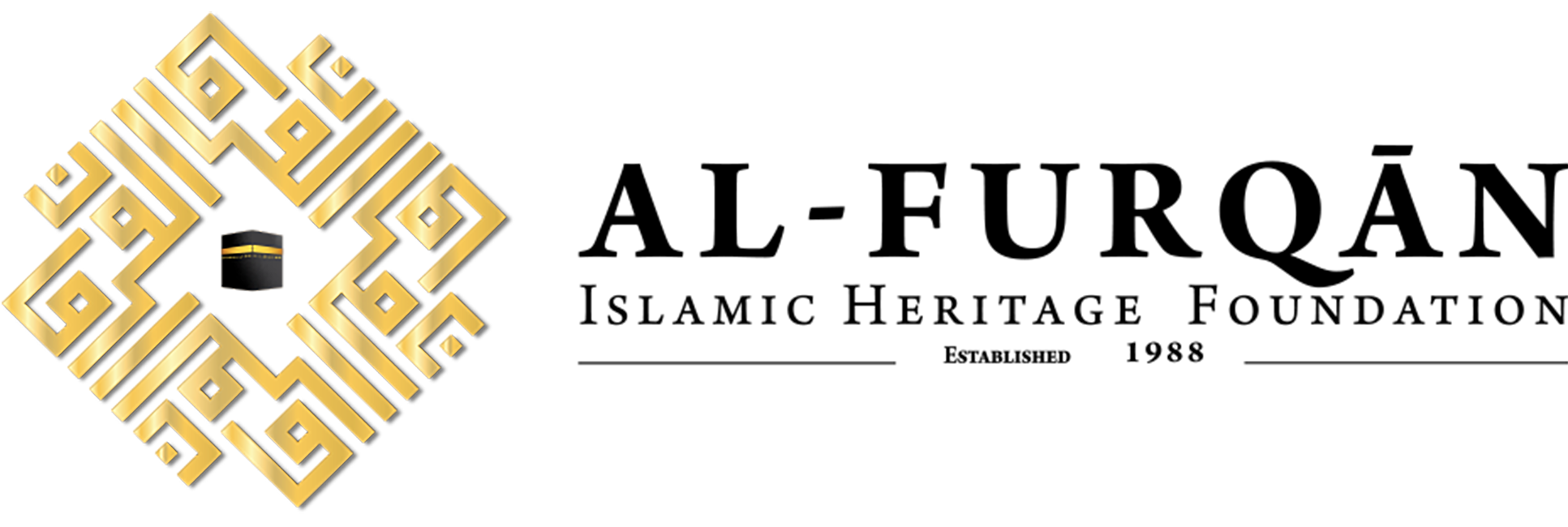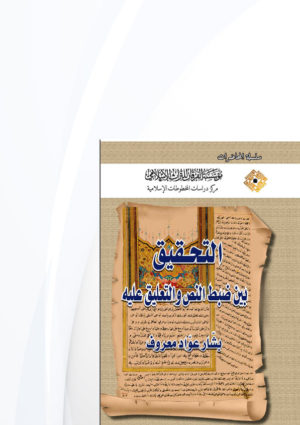The lecture theatre at Dar al-Hadith al-Hassania Institute in Rabat was the venue for a cultural evening, held on Thursday, 9 April 2015, dedicated to the subject of critical edition of the written heritage. Dr Bashar Awwad Marouf delivered a lecture titled “The Critical Edition of Manuscripts between Text Verification and Commentary”. The lecture was part of the training course programme organised by the Centre for the Study of Islamic Manuscripts at Al-Furqān Foundation, in co-operation with Dar al-Hadith al-Hassania Institute in Rabat, Morocco. The course was titled “Editing Manuscripts on Jurisprudence, Legal Theory, Fatwās, and Momentous Events (al-Nawāzil)”, and took place from the 6th to the 11th of April 2015, at Dar al-Hadith al-Hassania Institute. The course lectures were delivered by a selected group of specialists on critical edition, with the attendance of around 80 researchers.
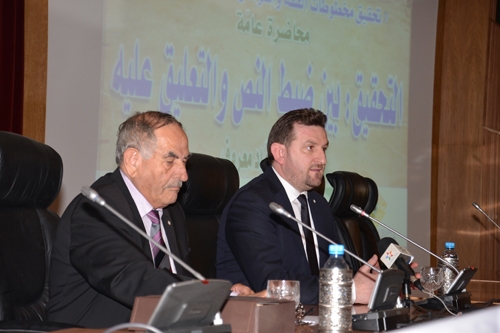
This lecture session was chaired by Mr Sali Shahsivari, Managing Director of Al-Furqān Foundation, who introduced the lecturer and thanked the Dar al-Hadith al-Hassania Institute, represented by its Director, Dr Ahmad al-Khamlichi, and Deputy-Director, Dr Abdul Hamid Achak, and all its professors, employees, and students, for kindly hosting the lecture.
Dr Bashar Awwad Marouf began his lecture by discussing the concept of critical edition, explaining that the science of critical edition aims to reproduce the original text, which the author left behind or was satisfied with at the end of his life. In the early days of interest in manuscripts in the West, a group of practitioners believed that the aim of editing was to produce a corrected text without the need for any commentary, where text verification alone would suffice. However, another group considered commentary to be indispensable, and indeed, some went to the extreme of saying that commentary must be made on everything. The lecturer then proceeded to illustrate the error of both positions, and that the correct approach is the middle way, where the editor compares different copies, identifies the key reading variants, verifies the author’s references, and traces quotations back to source.
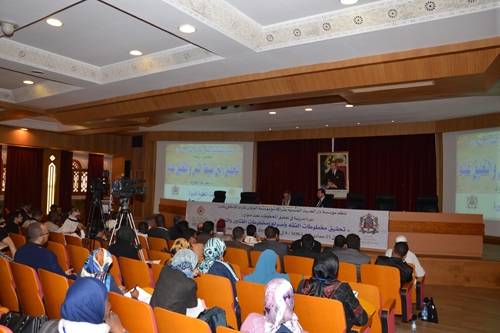
He then dwelt on the view of some researchers that the practice may only be called “editing” if applied to more than one manuscript copy, such that collation is performed. He considered this to be incorrect, given the many books that have been critically edited based on a single exemplar by prominent editors, such as Shaykh Aḥmad Shākir, and his brother, Maḥmūd Shākir, given the fact that, no researcher, at any time, has claimed that these books are not critical editions.
The lecturer also addressed the difference between critical edition and commentary, where editing is reconstructing the text [to closely approximate the original] using the appropriate means, while commentary describes the means by which the editor may achieve the critical edition. In addition, Dr Marouf drew attention to those matters that must be taken into consideration during the editing process, namely:
• Standardising the text presentation: the editor must take account of the rules of modern writing, in dividing the text into sections, using appropriate numbering and other marks, as well as attending to the other aspects of text organisation.
• Verifying the author's sources: wherever the editor identifies the author's sources, he must then refer back to them, and verify the author's citations.
• Establishing correct names and genealogies: by referring to those books addressing this aspect, such as al-Ikmāl by Ibn Mākūlā, and Tawḍīḥ al-Mushtabih by Ibn Nāṣir al-Dīn, which are the two most important books in this art.
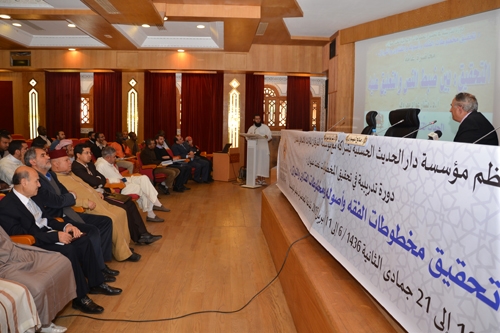
Extensive discussion and important questions on the themes raised, followed the lecture, which was attended by professors, doctoral students, researchers, and representatives of cultural institutions.
